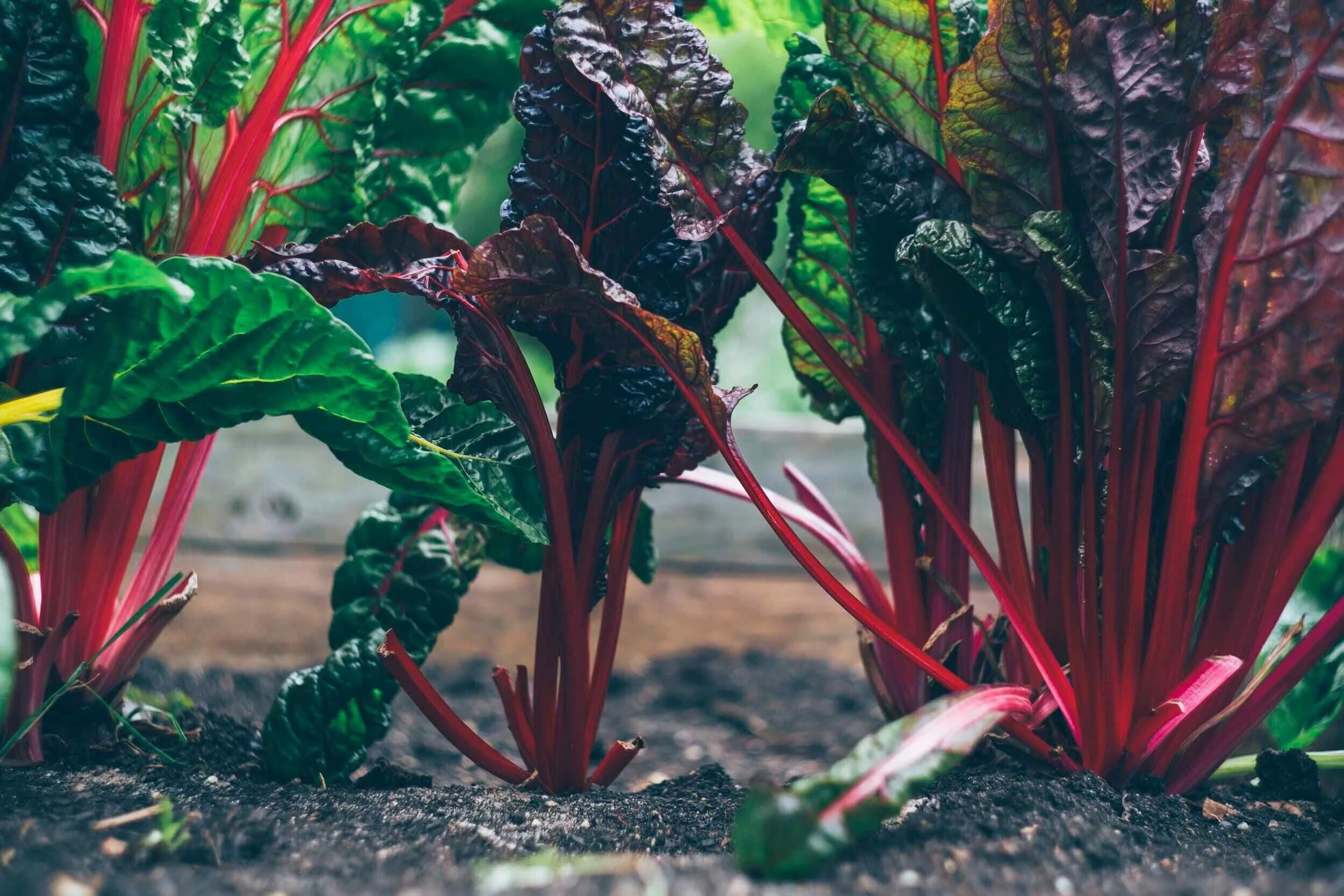Energetics of Rhubarb: More than Pie Filling
When my friend and I were knee-high to the curb, and August was tortuously hot, we’d look for things to do that didn’t require any energy. One of them was to pull a stalk of rhubarb, warm from the sun, and challenge each other to take a big bite and not make a face at the pucker-inducing sourness. Rhubarb is almost sweet (okay, I know, it’s a big ‘almost’) in early spring. But by the end of summer, it’s as sour as it can get – those sour candies are nothing compared to a stalk of August rhubarb!
My friend and I had no idea that what we were eating was actually good for us, we just liked to see each other make funny faces. Now I know that rhubarb is good for me. I love fixing cobbler and what I can’t shove into the cobbler I tuck in the freeze to use later. My significant other thinks rhubarb is a dessert and smirks at me when I tell him “it’s good for you”.
Varieties
In the United States, rhubarb is an imported plant, having arrived sometime in the 19th century. It is native to Siberia and its cultivation and trade stretch back to the days of the Silk Road when rhubarb was considered a Medieval European luxury item. It has also prized by the Chinese as a strong laxative, specifically the root (Da Huang). It wasn’t until the popularity of cane sugar hit that this sour vegetable transformed into something sweeter, filling pies and other desserts with its pink stalks.
Rhubarb comes in many varieties including red, pink, green, and speckled. The color is dependent on the type of rhubarb grown, but it does not affect the flavor, so go ahead and buy the color that appeals to you and your food creations!
Rhubarb is in season from May to September, with the best flavor being grown earlier in the season.
How to Choose and Store
When buying rhubarb look for thinner stalks with good color for the best taste and texture. Rhubarb with thicker stalks may be more fibrous.
For the freshest rhubarb, store it in the fridge wrapped in air-tight plastic. If stored correctly Rhubarb will last up to 7 days. When chopped up and stored in the freezer, rhubarb can last up to 1 year.
Nutrition
Rhubarb is mostly water (95%) and is filled with Vitamin C, fiber, potassium, and calcium. This pretty red stalk is also diet-friendly, having about 26 calories per cup. Anthraquinones give rhubarb its well-documented laxative effect – constipation sufferers, take note.
Caution with Rhubarb leaves, as they are poisonous! The culprit is oxalic acid crystals, which can cause tongue and throat swelling to the point of asphyxiation or create a build-up of calcium oxalate in the kidneys leading to kidney failure.
Energetics
Rhubarb’s temperature is cold and the taste is bitter (root) and sour (stalk). It helps to detoxify and cool the liver, is effective in reducing the symptoms of overeating meat and rich foods, and is extremely effective in moving the stools when there are signs of heat (used in conjunction with a moistening intestinal protective like licorice root). When used as a laxative, rhubarb should not be taken long term. Caution on overconsumption with the fresh plant, as it can lead to dizziness, nausea, vomiting, and diarrhea.
Chicken Smothered in Rubarb
3 1/2 pound chicken, cut into 10 serving pieces
Topping
1 tablespoon flour
1/4 cup olive oil
1 pound rhubarb, cut into 1 1/2-inch piece
2 medium onions, julienned
1 tablespoon minced garlic
1 bay leaf
Fresh thyme sprigs
1 cup white wine
3 tablespoons finely chopped parsley
Garnish: 2 cups cooked white rice, warm, 1 tablespoon finely chopped parsley
Directions: In a mixing bowl, toss the chickens with Essence and flour. In a large heavy pot, heat the olive oil. When the oil is hot, brown the chicken for 6 to 8 minutes on each side. Add the rhubarb and onions. Season with salt and pepper. Stirring constantly, wilt and brown the onions, scraping the bottom of the pot to loosen any brown particles, for about 10 minutes. Add the garlic, herbs, and wine, cover, and reduce the heat. Stir occasionally and cook for about 45 minutes or until the chicken is tender. Stir in the parsley. Arrange the chicken on a platter and garnish with parsley and serve with rice.
Source
https://foodprint.org/real-food/rhubarb/
www.rhubarbinfo.com
Mateljan, George. The World’s Healthiest Foods: Essential Guide for the Healthiest Way of Eating. George Mateljan Foundation: Seattle, 2007. Print.
Pitchford, Paul. Healing with Whole Foods: Oriental Traditions and Modern Nutrition. North Atlantic Books: Berkeley, 1993. Print.



